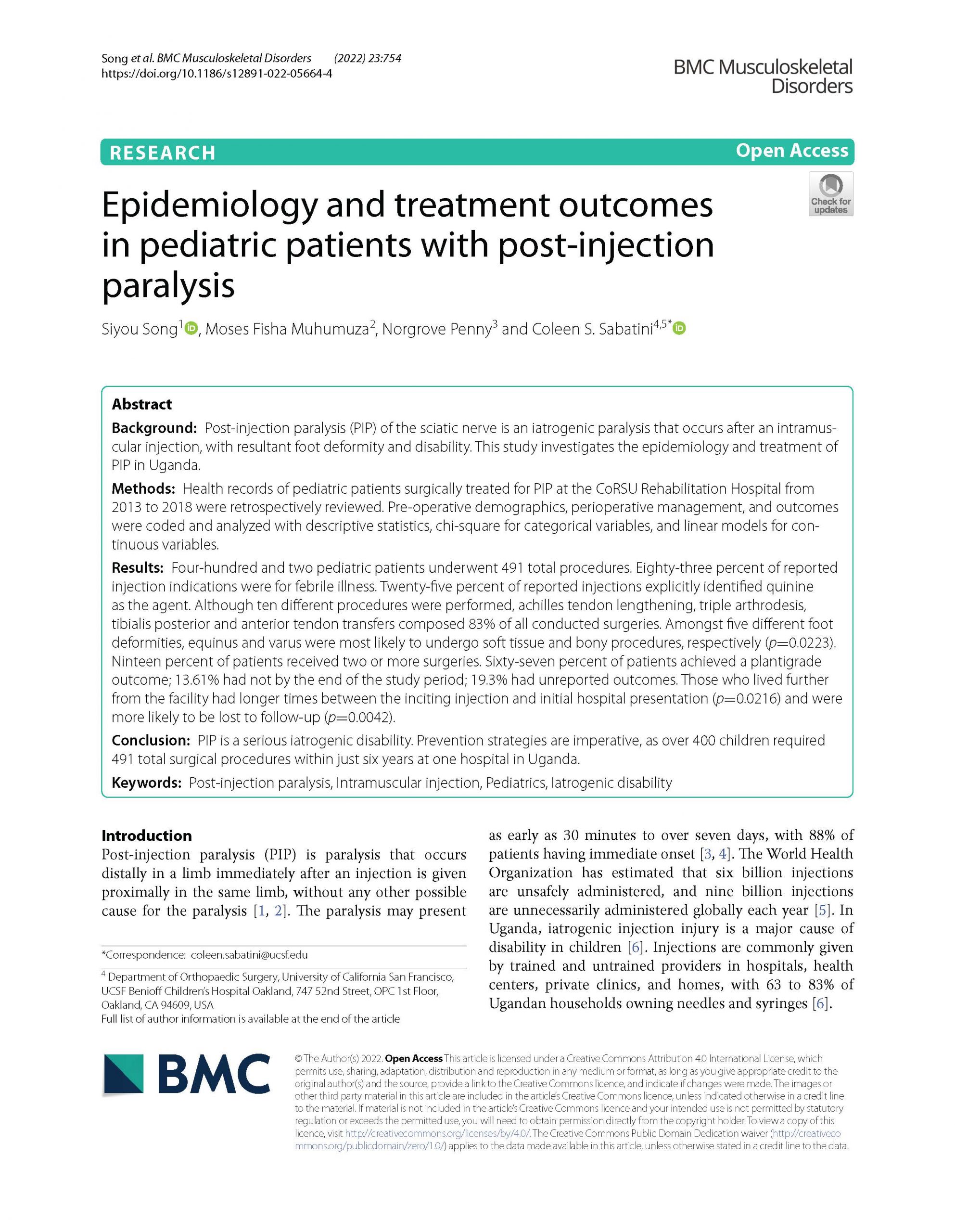 Siyou Song, Moses Fisha Muhumuza, Norgrove Penny (BGSC Faculty Member), and Coleen S. Sabatini recently published an article investigating the epidemiology and treatment of Post-Injection Paralysis in Uganda.
Siyou Song, Moses Fisha Muhumuza, Norgrove Penny (BGSC Faculty Member), and Coleen S. Sabatini recently published an article investigating the epidemiology and treatment of Post-Injection Paralysis in Uganda.
To read the full text, please visit here.
Abstract
Background: Post-injection paralysis (PIP) of the sciatic nerve is an iatrogenic paralysis that occurs after an intramuscular injection, with resultant foot deformity and disability. This study investigates the epidemiology and treatment of PIP in Uganda.
Methods: Health records of pediatric patients surgically treated for PIP at the CoRSU Rehabilitation Hospital from 2013 to 2018 were retrospectively reviewed. Pre-operative demographics, perioperative management, and outcomes were coded and analyzed with descriptive statistics, chi-square for categorical variables, and linear models for continuous variables.
Results: Four-hundred and two pediatric patients underwent 491 total procedures. Eighty-three percent of reported injection indications were for febrile illness. Twenty-five percent of reported injections explicitly identified quinine as the agent. Although ten different procedures were performed, achilles tendon lengthening, triple arthrodesis, tibialis posterior and anterior tendon transfers composed 83% of all conducted surgeries. Amongst five different foot deformities, equinus and varus were most likely to undergo soft tissue and bony procedures, respectively (p=0.0223). Ninteen percent of patients received two or more surgeries. Sixty-seven percent of patients achieved a plantigrade outcome; 13.61% had not by the end of the study period; 19.3% had unreported outcomes. Those who lived further from the facility had longer times between the inciting injection and initial hospital presentation (p=0.0216) and were more likely to be lost to follow-up (p=0.0042).
Conclusion: PIP is a serious iatrogenic disability. Prevention strategies are imperative, as over 400 children required 491 total surgical procedures within just six years at one hospital in Uganda.
Keywords: Iatrogenic disability; Intramuscular injection; Pediatrics; Post-injection paralysis.
